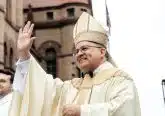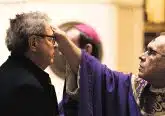Legislating for Life After Dobbs
The first Respect Life Month after the overruling of Roe v. Wade by the case of Dobbs v. Jackson Women’s Health is an opportunity to consider abortion access and regulation in a post-Roe world. It presents a challenge to both think clearly about the form (and limits) of pro-life legislation and understand that (at least temporary) legislative compromise will be a necessary reality. Most importantly, this is the time for us to consider what the real goal is. We must understand that the objective is not to pass legislation over the objections of opponents, but rather to be a witness to the Gospel of Life so that opponents become allies. To be sure, law is a teacher; but Christian witness is a greater one. The struggle to protect unborn life begins in the hearts of people, not in the wells of legislative assemblies. Disciples will not be made by laws protecting unborn life, but such laws will be less needed and more likely when disciples are made.
THE LIMITS OF DOBBS
Nonetheless, we can and ought to work now to protect unborn life, within the constraints of a democratic polity. For nearly 50 years, Roe strictly inhibited individual state legislatures from passing laws to limit and regulate abortion. Roe was irrelevant for many states: those in which the law already provided broad, liberal access to abortion or which passed legislation after Roe that provided similar approval. Before Roe, no one argued that the U.S. Constitution prohibited abortion, and many states legislated accordingly. Dobbs is also irrelevant, at least for purposes of their current legislative and regulatory schemes. Despite much of the overwrought and often disingenuous reaction to it, the Dobbs decision does not proscribe or even inhibit abortion access. It merely holds that the Constitution does not prohibit states from regulating abortion.
The states for which Roe was (and Dobbs is) relevant are those in which the will of most citizens was (or is) to regulate access to abortion for the purpose of protecting unborn lives. While Dobbs does not prohibit abortion, it does remove restrictions that prevented states from passing legislation to do just that.
Many states, Ohio included, passed various kinds of laws that protect unborn life by prohibiting abortion in many or most instances or by heavily regulating access to abortion. And, of course, a percentage of citizens oppose such laws. Individually and through associated interest groups, pro- abortion advocates have begun to focus their efforts on states that have, or likely will, enact anti-abortion legislation. Pro- life activists have similarly begun to energize in states that allow abortion for any or no reason, up to full term. These competing interests comprise the new struggle in the U.S. over abortion access and regulation. Unfortunately, this struggle is highly affected by ignorance and misinformation about actual and proposed abortion legislation, as well as the Catholic position on some hard cases.
CLARIFYING ECTOPIC PREGNANCY
A prominent example of this is ectopic pregnancies, which have had a disproportionate focus since Dobbs’ passage. An ectopic pregnancy occurs when an embryo implants somewhere other than the wall of the uterus, most often in a fallopian tube. Ectopic pregnancies are always fatal for the developing child and can be very dangerous for the mother’s health. If it does not result in spontaneous miscarriage (called “expectant therapy”), an ectopic pregnancy must be treated by a physician, which always results in the death of the child in the embryonic stage.
While every case is tragic, ectopic pregnancies account for less than two percent of all pregnancies. About 90% of these resolve naturally, and 10% require medical intervention. This means that about .2% (two-tenths of one-percent) of all pregnancies result in ectopic pregnancies requiring medical intervention.
To go by pro-abortion rhetoric, one would think every abortion results from an ectopic pregnancy and every state regulating abortion prohibits medical care for these pregnancies. The truth is exactly opposite. Every state that passed laws regulating abortion permits such treatment, with full understanding that it always ends the embryonic child’s life. Prohibition laws either exclude such treatment from the definition of abortion or make an exception for termination of ectopic pregnancies. Performed through a common method and with the proper intentions, such treatment is in accord with Catholic moral theology.
So why all the emphasis on ectopic pregnancy? Simply put, to confuse, misinform, and obfuscate. The overwhelming number of abortions in the U.S. (upward to 98%) have nothing to do with an abnormal pregnancy or the health of the mother. This does not mean that the other pregnancies are not stressful for the mother and her family. Nor does it mean that all of these abortions are sought casually or without sincere moral struggle by the pregnant mother. We must respond to this with great compassion, care, and understanding.
In the context of legislative proposals and advocacy, we must also not allow perfect to be the enemy of good. In maintaining moral objection to abortion even in tragic cases, such as rape or incest, we must expect that democratic compromise will often require exceptions for these cases. We may have to tolerate such legislation, while advocating laws that are more thoroughly consistent with the dignity of unborn life. And, of course, we must maintain our consistent witness to the Gospel of Life even in these tragic cases. This is the path of conversion, not legislative victories.
 Dr. Kenneth Craycraft is an attorney and the James J. Gardner Family Chair of Moral Theology at Mount St. Mary’s Seminary & School of Theology.
Dr. Kenneth Craycraft is an attorney and the James J. Gardner Family Chair of Moral Theology at Mount St. Mary’s Seminary & School of Theology.
This article appeared in the October 2022 edition of The Catholic Telegraph Magazine. For your complimentary subscription, click here.













